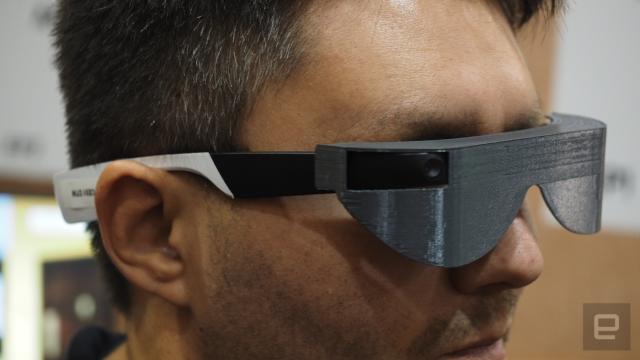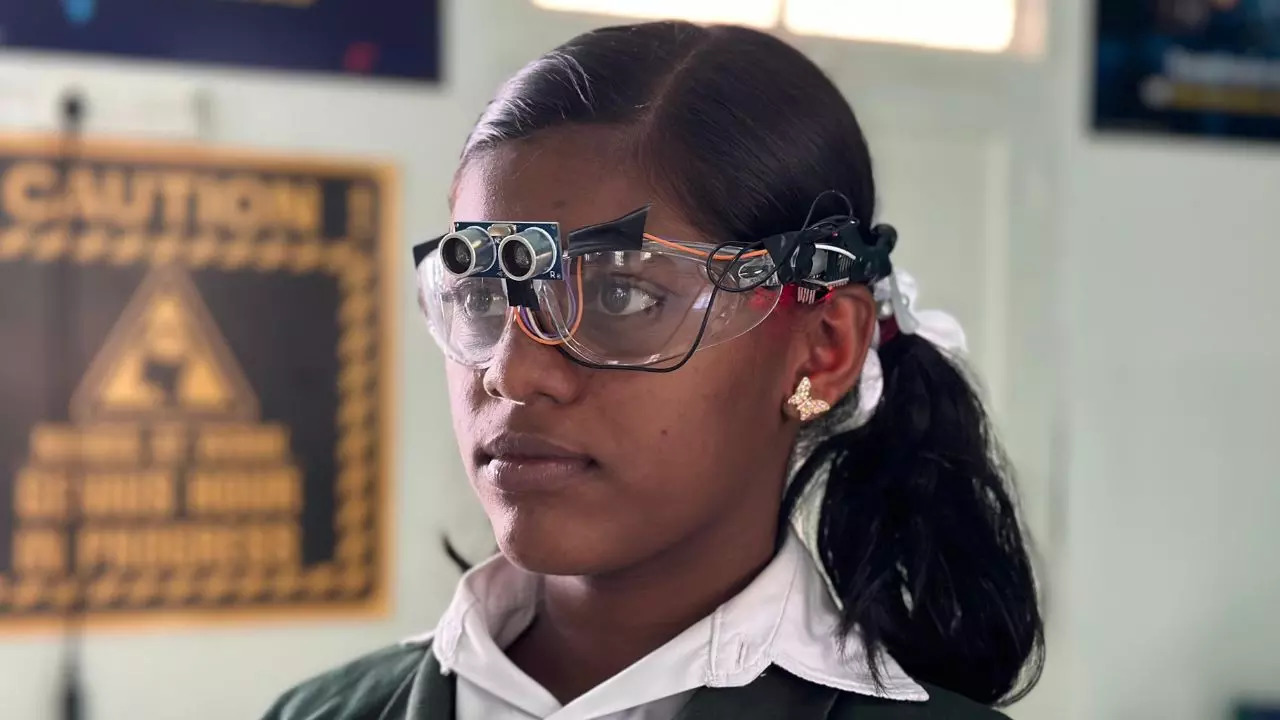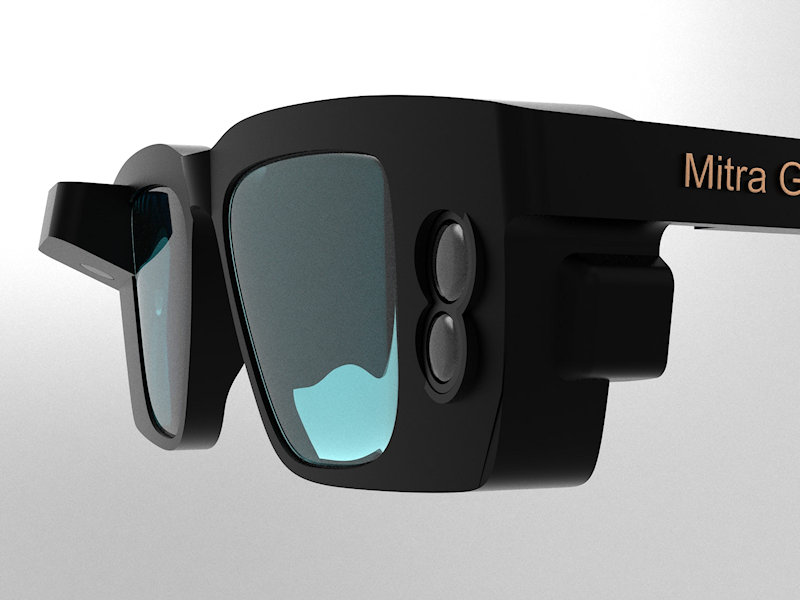Enhancing Accessibility With Assistive Innovation for the Blind
The integration of assistive modern technology for the blind represents a critical advancement in access, basically changing how people navigate their environments and involve with culture. As we check out the diverse kinds of assistive devices and their substantial effects on everyday living, it comes to be necessary to analyze just how continuous technological innovations are reshaping the landscape of assistance for the blind neighborhood.
Overview of Assistive Modern Technology
Assistive innovation describes a variety of tools and software application designed to improve the capabilities of people with disabilities, consisting of those who are aesthetically damaged or blind. This innovation plays an essential duty in promoting self-reliance and improving the high quality of life for customers. By offering different methods for accessing info and performing everyday jobs, assistive technology equips people to navigate their atmospheres better.
The advancement and execution of assistive technology welcome a variety of principles targeted at cultivating accessibility. These concepts include user-centered style, which prioritizes the demands and choices of the person, and the combination of modern technology right into daily tasks. Such innovations ensure that assistive gadgets are not just useful yet also user-friendly and simple to utilize.
Furthermore, assistive innovation encompasses a diverse spectrum of solutions, from low-tech choices like magnifiers to sophisticated innovations such as screen readers and Braille displays. The recurring advancement of this area is driven by the need to attend to the special difficulties dealt with by individuals with aesthetic impairments (Wearable technology for low vision). As innovation remains to advancement, the possibility for boosting ease of access and advertising inclusivity remains encouraging, ultimately adding to an extra equitable society

Kinds Of Assistive Instruments
Various kinds of assistive tools are readily available to support people who are blind or aesthetically damaged, each developed to attend to details requirements and difficulties. These devices can be broadly categorized right into three primary kinds: low-tech, mid-tech, and modern options.
Low-tech devices consist of products such as magnifiers, Braille labels, and responsive maps. These are relatively simple devices that boost the individual's capacity to connect with their atmosphere without needing complex modern technology.
Mid-tech devices often entail much more innovative attributes, such as electronic magnifiers and portable Braille note-takers. These devices can offer performances like speech result, allowing customers to access info a lot more efficiently.

Effect On Daily Living
The schedule of numerous assistive tools significantly enhances the lifestyle for individuals who are blind or visually impaired, impacting their daily living in profound ways. By integrating technologies such as display viewers, Braille presents, and audio summary solutions right into their routines, individuals acquire greater autonomy and independence. These devices promote accessibility to details, allowing individuals to carry out daily jobs, such as checking out e-mails, browsing public rooms, and taking pleasure in media material.
Additionally, assistive gadgets empower people to involve more fully in social interactions and area tasks. The capability to utilize smart devices outfitted with availability features permits for smooth interaction and link with others. This connection cultivates a feeling of belonging and minimizes sensations of seclusion.
In professional setups, assistive innovation supports productivity by permitting individuals to full job tasks successfully. Devices like voice recognition software program and specialized zoom devices make it possible for individuals to participate in the labor force on equal ground with their sighted peers.

Improvements in Innovation
Recent technical advancements have considerably transformed the landscape of tools available for people that are od degree visually impaired or blind. The integration of artificial intelligence (AI) and machine understanding has actually triggered applications that enhance navigation and things acknowledgment. For instance, mobile phone apps can currently use AI to identify and define environments in real-time, offering individuals with important contextual information.
Furthermore, developments in haptic technology have actually resulted in the development of clever walking sticks equipped with sensing units that discover obstacles and give tactile responses. This equips users to browse their atmosphere with raised self-confidence and independence. Developments in text-to-speech software program and braille displays have actually improved the availability of electronic material, permitting for seamless interaction with different media.
Wearable modern technologies, such as wise glasses, are additionally making strides in helping aesthetic disability. These devices can provide augmented fact experiences, overlaying important details onto the user's field of vision. Collectively, these innovations not only improve the top quality of life for people who are blind however additionally check that promote greater addition in culture. As technology remains to progress, the possibility for even more transformative tools stays imminent.
Future Trends and Innovations
As technology quickly progresses, the future of assistive tools for people that are blind holds enormous promise. Innovations in fabricated knowledge (AI) and device knowing are positioned to reinvent the method blind users connect with their atmospheres. AI-driven applications are being developed to boost object acknowledgment, allowing customers to identify and browse their surroundings with better ease and precision.
Moreover, improvements in haptic feedback modern technology are enabling the production of tactile maps and navigation help that give real-time info via touch. These developments not only improve flexibility see page but additionally foster independence. Furthermore, wearable tools geared up with enhanced fact (AR) features are arising, supplying users visual details through sound descriptions, consequently bridging the gap between the physical and electronic worlds.
Moreover, the assimilation of wise home modern technology presents new chances for access, allowing individuals to manage their living settings via voice commands or smartphone applications. As collaboration between technology programmers and the blind area continues, the concentrate on user-centered design will make sure that future advancements are customized to fulfill the unique needs of this population (Wearable technology for low vision). The trajectory of assistive innovation guarantees a much more empowering and comprehensive future for people that are blind
Verdict
In verdict, assistive modern technology plays an essential function in improving ease of access for individuals with visual disabilities. The diverse range of gadgets, including screen readers and smart canes, significantly improves daily living and cultivates freedom. Continual innovations in modern technology and user-centered layout make sure that these tools cater properly to the distinct needs of the blind neighborhood. As technologies progress, raised inclusivity and empowerment can be prepared for, eventually enriching the high quality of life for those affected by aesthetic disabilities.
The integration of assistive modern technology for the blind represents a pivotal innovation in availability, fundamentally modifying exactly how people browse their environments and involve with society.Assistive technology refers to an array of devices and software program created to enhance the abilities of individuals with specials needs, including those that are visually damaged or blind. Wearable technology for low vision.As technology quickly progresses, the future of assistive tools for people who are blind holds tremendous guarantee. The trajectory of assistive modern technology promises a much more empowering and inclusive future for people who are blind
In final thought, assistive technology plays a vital role in improving access for individuals with aesthetic problems.